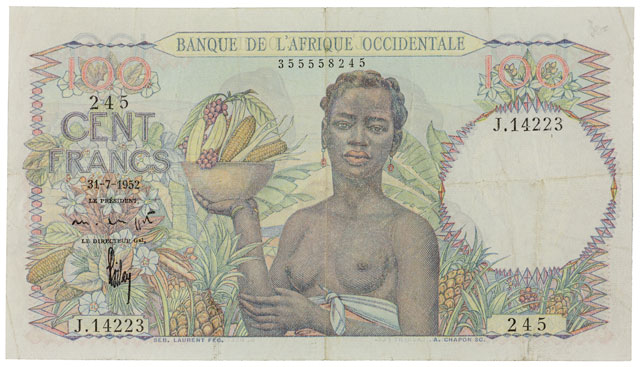The parceling out of the African continent by European nations is in part told through this object. This bill is an example of a French West Africa 100 franc from 1952, though this same note was printed from 1943 to 1954. The depictions of African people on this bill gives insight on French colonialism in Africa. A topless African woman is represented on the face of the franc, gathering fruits and vegetables into a bowl. This portrayal is a message by the French about African people; they are stereotyping and exoticizing her while also showing how colonization ‘benefits’ those that are colonized. The back of the note shows a couple with a baby, signaling domesticity, which translates in the Western mind to a newly ‘civilized’ and ‘modern’ West African people. While these bills are no longer in circulation, fourteen West African countries continue to be politically and economically exploited through the extraction of resources and capital, by France.
Text Description: An African woman is in the middle of the front of this bill. She is holding a bowl of fruit and vegetables and her chest is exposed. She is making eye contact with the viewer, with a watermark on the right and more foliage on the left.
Text Description: An African woman, man, and child are seen on the back of the note. The woman is holding the baby, her chest is also bare. The watermark is on the left, there is a body of water and hills in the background, as well as a herd of cattle.

Comments are closed, but trackbacks and pingbacks are open.